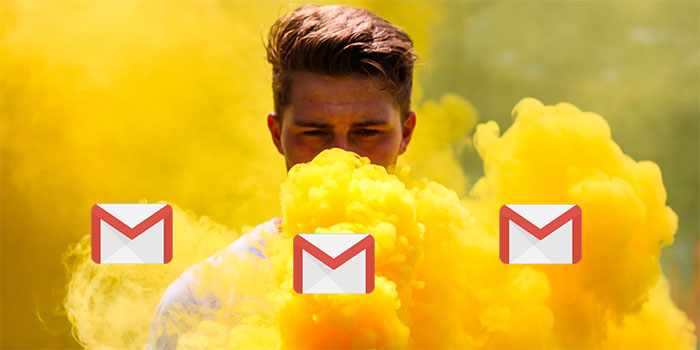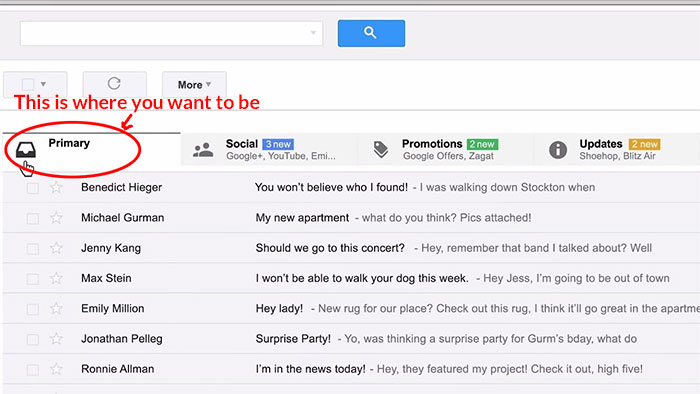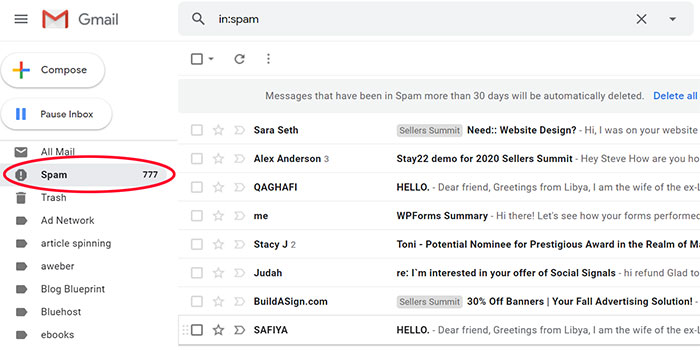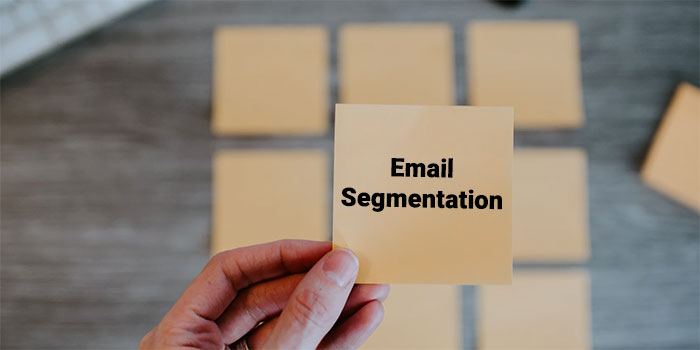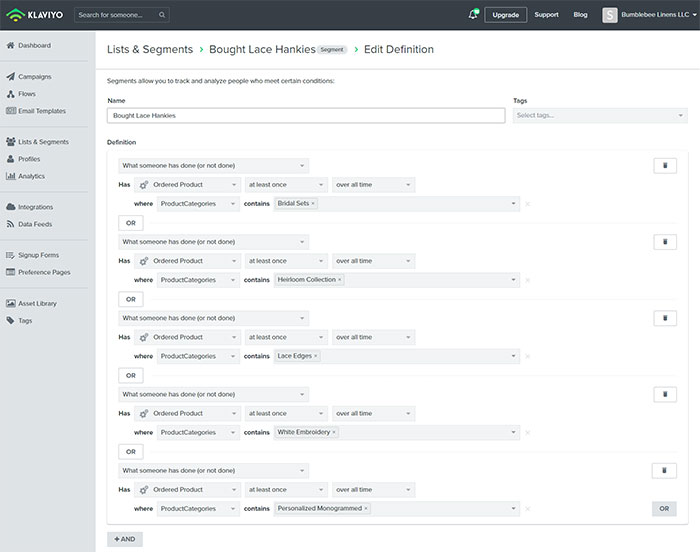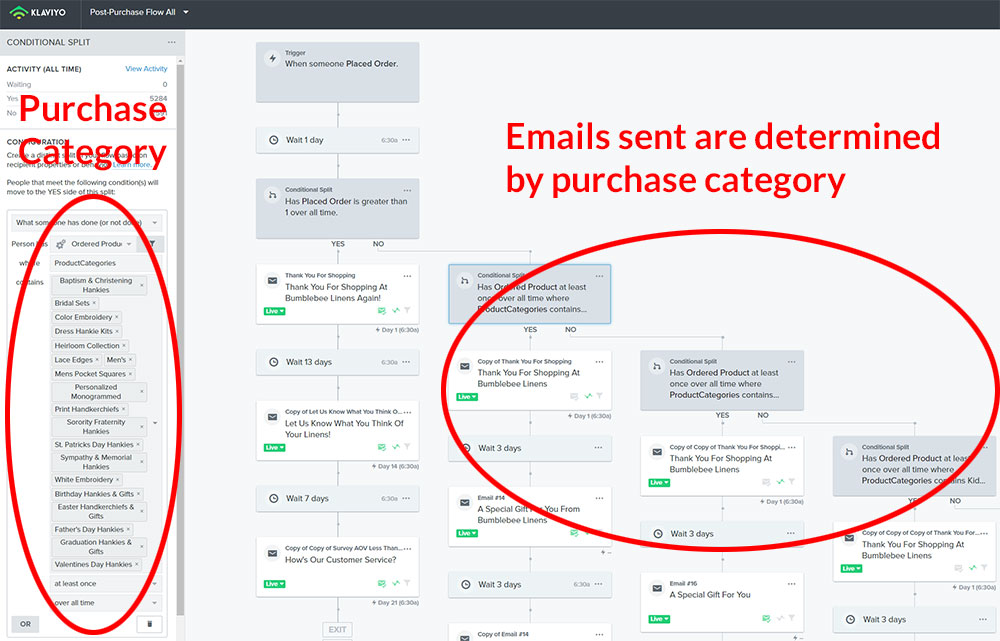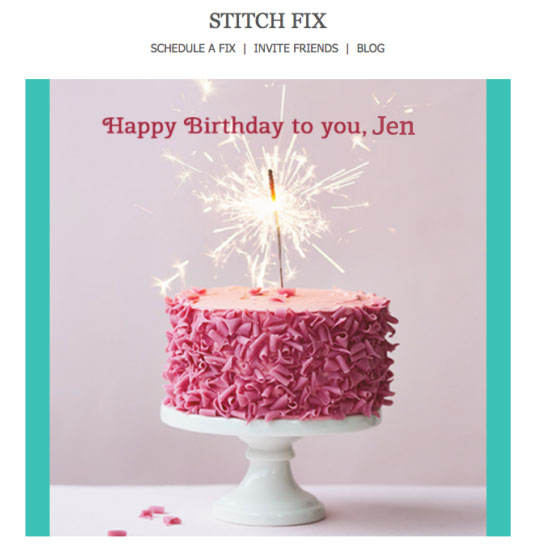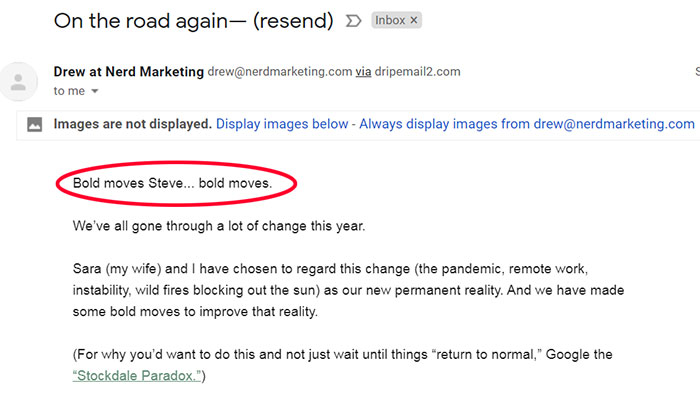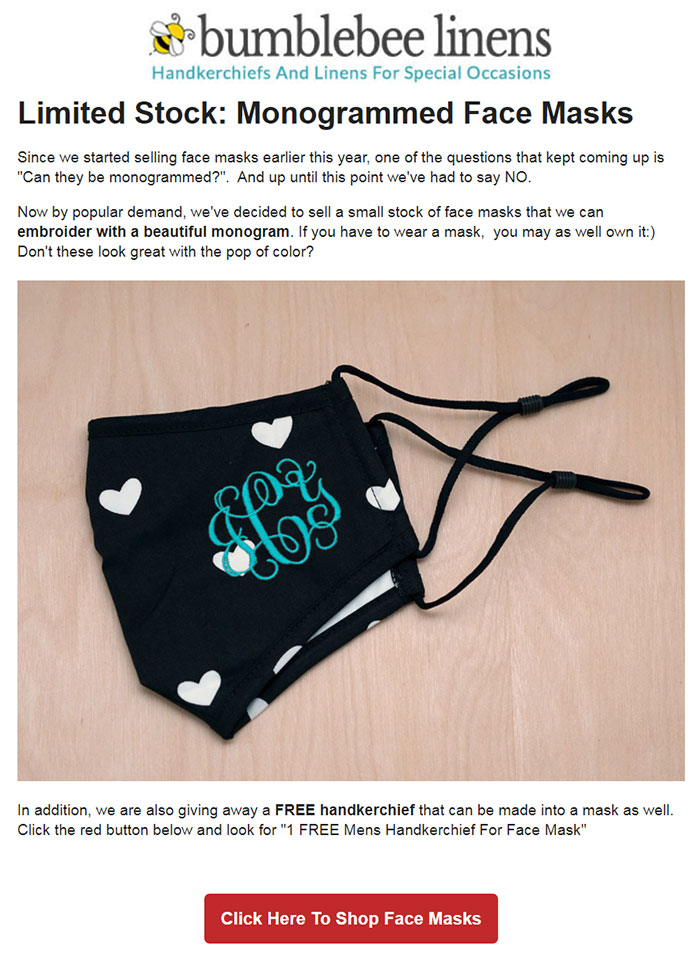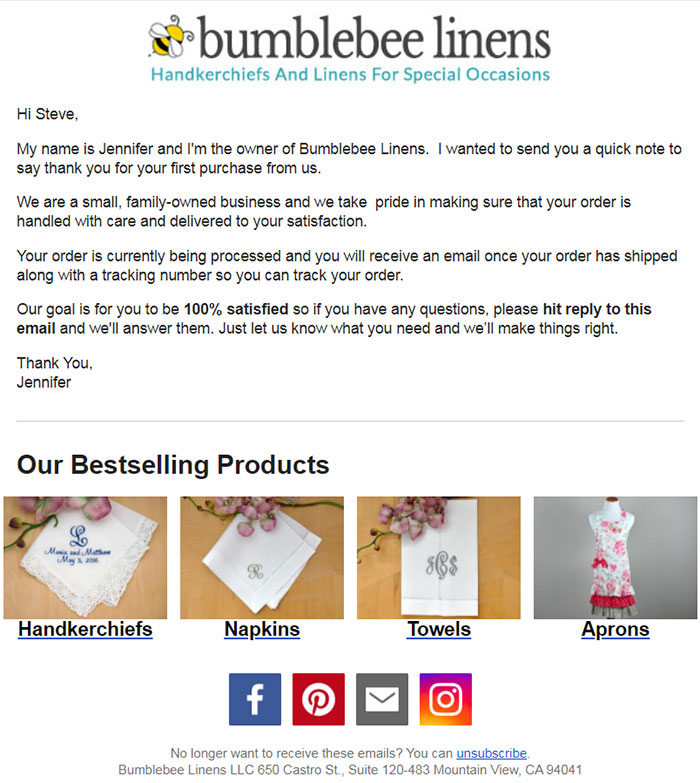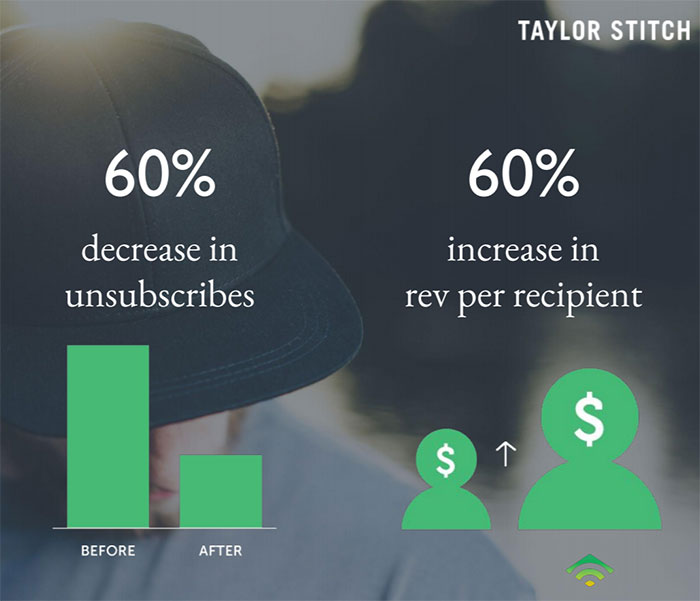Once you’ve built up a sizable email list, you might be tempted to send an email blast to all of your subscribers. After all, if you’re paying an email marketing provider to store your subs, you may as well email everyone every time right?
Wrong!
Intuitively, you might think that sending a monolithic email blast to everyone on your list is the best way to maximize your reach. But in reality, you could be negatively affecting your email deliverability.
You might be annoying potential customers by sending messages that they don’t want.
The right way to run your email marketing campaigns is to avoid generic email blasts altogether and to send targeted messages based on customer behavior.
In this post, you’ll learn how to send email the right way and how to properly segment your list for maximum revenue growth.
Get My Free Mini Course On How To Start A Successful Ecommerce Store
If you are interested in starting an ecommerce business, I put together a comprehensive package of resources that will help you launch your own online store from complete scratch. Be sure to grab it before you leave!
What Is An Email Blast?
In order to know what NOT to do, you first have to understand what an “email blast” is.
An email blast is when you send a single mass email message to your entire list that is not well targeted.
Typically email blasts are…
- Sent to as many people as possible without regard for their interests or demographics
- Designed to generate clicks no matter who is on the receiving end
- Generic and address a vague audience
Are you guilty of sending email blasts to your email list? Don’t worry, you’re probably not alone. Studies have shown that 53% of marketers send the same identical message to all of their recipients.
The reality is that it’s much less time consuming to send generic messages to your audience but it’s definitely hurting your sales. Here’s why email blasts are bad for business.
Email Blasts Are More Likely To Hit The Spam Folder
Back in the early 2000’s, sending an email blast was an effective strategy because a large percentage of your emails actually reached a recipient’s inbox.
But today, only a percentage of emails actually make it to the intended target. ISPs like Gmail analyze your email habits and only show you emails that you have a high percentage of reading.
For example, Gmail offers 3 different inboxes in addition to their spam folder. And the only way to reach a user’s “primary inbox” is to send recipients emails that they actually want to read.
As a result, if you repeatedly send email blasts to people who never open your emails, they will eventually go to spam.
Email Blasts Are Less Effective At Converting A Sale
Aside from hitting the spam folder, there are other reasons why email blasts should be avoided at all costs.
First off, an email blast by definition is untargeted and unsegmented and that in itself makes for a less effective message.
For example, let’s say that I’m in the market for a math book for my kids and I receive the following 2 emails from different stores.
Email #1:
Discover the difference 15 minutes of math per day can make! Our math books help students learn their multiplication facts and recall them with fluidity.
A strong number sense is the basis for more advanced math concepts―this product helps children begin building that foundation.
Email #2:
Are you an Asian parent who is disappointed with your current school’s math curriculum? These math books are specifically designed to accelerate your child’s math skills so they can jump straight to high school.
Elementary school math is for chumps!
Obviously, email #2 is going to be FAR MORE effective for me than the generic message of email #1!
The more specific your messaging, the more sales you’ll make!
Email Blasts Annoy Potential Customers
When you segment your email list, you can identify specific groups with specific needs and create targeted email offers. In ecommerce land, that means sending people products that they actually want.
A few weeks ago, I purchased a t shirt from an online clothing retailer (which I will not name publicly). And the following week, I received an email for women’s shoes!
As an Asian male, why would I be interested in purchasing clothing and accessories for females?
Most likely, this online retailer was running a sale and thought that it would be ok to send a mass email with a generic offer to their recipients.
But it backfired for me and I’m pretty sure a significant percentage of their male audience unsubscribed even though they actually like their products!
When you send out generic, “one size fits all” emails to your audience, they will fit no one well.
How To Segment Your Email List
According to Klaviyo, an effective email segmentation strategy can result in a 3X increase in revenue per recipient. In addition, proper segmentation typically results in a 50% decrease in unsubscribes.
In an ideal world, you should send customized emails to everyone as if you were speaking to them 1 on 1. But in reality, this is impossible to do especially if you have a sizable email list.
As a result, you have to make some tradeoffs depending on your resources. On one hand, an extremely granular email segmentation strategy will convert more sales and yield a higher open rate.
But on the other hand, segmentation complexity means more time and resources required to send specific emails to each audience.
At a high level, you can segment your audience based on:
- Demographics – How old are they? What is their gender?
- Interests and personality – What are they interested in and what do they value?
- Hobbies and entertainment – What do they enjoy doing?
- Geographical location – Where do they live?
- Purchase behavior – What have they purchased?
- Email activity – How engaged is your customer to your emails?
Now there are many different ways to segment your email audience and it can quickly become overwhelming.
As a result, we’ll keep things simple and focus on a segmentation strategy that assumes you do NOT have a large team.
Below are some “low hanging fruit” email segmentation strategies and best practices on how to send emails to your list.
Editor’s Note: My favorite email marketing providers for easy email segmentation are Klaviyo for an ecommerce store and either Drip or ConvertKit for a blog
Segment Your List Based On Purchase Behavior
At a bare minimum, you should segment your customers based on what they bought. For example, one way I segment my customers for Bumblebee Linens is based on the product category of their last purchase.
Using a tool like Klaviyo, you can easily put together segments based on a customer’s purchase history. The key to this strategy is that these segments can be created “after the fact” and don’t require any upfront planning.
In the example above, I created a segment for every customer who purchased a lace handkerchief. And whenever I have new lace handkerchief products to announce, I specifically target this segment.
Once you have your product segments created, you can fully automate your email post purchase sequence.
In the example below, specific product cross sell emails are magically sent based on what a customer bought. For example, if they purchased napkins, they are automatically shown additional cross sells for other napkins!
Segment Based On Email Activity
Segmenting based on email activity is probably the most important type of segment to implement with your list. After all, if you continuously send email to users who don’t open, then your future emails are much less likely to reach their inbox.
First off, I never send emails to people who have not opened or clicked an email in over 6 months. If someone hasn’t read your email for that long, then chances are that they are no longer interested in your company.
If you continue to send email to unengaged subscribers, your overall email deliverability will suffer which will prevent future emails from being delivered to potential customers who want to hear from you.
All subscribers who have not read or clicked your emails for longer than 6 months should be placed on a sunset sequence and then subsequently unsubscribed.
Here’s how I have my email list segmented based on activity.
Here’s a quick tip. Whenever I have a big sale to announce and I want my email deliverability to be as high possible, I will always send to my most engaged list first.
For example, I will send to my “Opened in the last 1 month” segment first, wait an hour, and then send to my “Open between 1-2 months ago” followed by “Opened between 2-4 months” etc…
By sending to your most engaged audiences first, it signals ISPs that your email has a high open rate which paves the way for better deliverability of your next email.
I mainly use this strategy for big announcements and it typically increases your open rate by 10-15%. The downside is that you have to set up multiple email sends of the same email to different segments which can get tedious.
Segment Based On Customer Value
Not every customer is equal.
Some customers are actively reading all of your emails but haven’t bought yet.
Other customers have placed only a single order with your store and haven’t come back. And some customers buy from you regularly and spend a ton of money!
Would you send the same email to all 3 customer categories above? If you are, then you are leaving a lot of money on the table.
Here’s why.
Let’s say you have a customer who buys from you every month like clockwork and never uses a coupon. Would you want to send this customer a 40% off coupon?
Similarly, would you tell a visitor who hasn’t bought from your store yet about your loyalty program? No way!
The following 3 customer categories should be treated differently.
- Customers who have yet to make a purchase
- Customers who have made a single purchase
- Customers who have made multiple purchases
If you want to get fancy, you can also further segment your purchasers based on…
- Customers who purchased greater than 2X your average order value
- Customers who purchased 1-2X your average order value
- Customers who purchased less than your average order value
Here’s how you should treat each segment.
The Whales
The whales are your best customers. They buy from you frequently, open a high percentage of your emails and spend a ton of money!
The whales for my online store are our event and wedding planners who buy our handkerchiefs in bulk.
For your whales, you should focus on sending emails that make them feel special. For example, you can offer your whales special discounts on bulk purchases and loyalty program perks.
You can also provide them with exclusive access to new products and upcoming releases. You can also ask for their input to create new designs. The main goal is to treat your whales like royalty.
We actually take our whale pampering to the next level by calling them up and providing them with a dedicated point of contact to handle future purchases.
The One Timers
Getting someone to buy once from your store is great, but getting that second sale is the key to driving long-term value for your online store.
According to Marketing Profs, by getting a second purchase, your customer is more than twice as likely to buy a third time, and even more likely to continue buying in the future.
In a study conducted by Adobe, they found that every 1% of shoppers they retained resulted in a 10% increase in revenue.
Bottom line, getting that second sale is important! For first time customers, you can encourage a repeat purchase by…
- Teasing the perks of joining your loyalty program
- Offering up cross sells of related products
- Selling complementary accessories
- Offering a subscription based discount for consumables
If a customer has yet to purchase again after a set duration, you can encourage a subsequent sale with a win back email campaign with a coupon.
In general however, one time customers should not require large coupons to generate future sales.
The Potential Customer
Potential customers are subscribers who have expressed interest in your products but haven’t pulled the trigger yet. And in most cases, they are just waiting for a reason to buy.
To help push a potential customer over the edge, you’ll want to emphasize the value that your product provides. Send potential customers emails that create FOMO or a sense of urgency.
As a last resort, you can provide a mild discount or a limited time offer to get them to buy.
Bottom line, emails sent to your potential customers will be much different than the emails you send to your existing customers.
My Favorite Tools For Email List Segmentation
When it comes to email list segmentation, choosing the right email marketing provider is extremely important. Here are the 3 email marketing providers that I recommend for implementing the techniques described in this article.
Klaviyo – The Best Email Marketing Solution For An Ecommerce Store
Go with Klaviyo if…
- You run an ecommerce store that sells physical products online
- You need the most advanced tagging and segmentation features tailored to an ecommerce store
- You want detailed information about your subscribers so you can easily prune your list or send email based on exactly what a customer purchased or added to cart
- You have a higher budget for email
Click Here To Try Klaviyo For Free
Drip – The Best Email Marketing Solution For A Blog
Go with Drip if…
- You run a content based site that sells subscriptions or digital products
- You need the most advanced tagging and segmentation features for a content based site
- You want to factor in user activity on your website when creating subscriber lists
- You want detailed information about your subscribers so you can easily prune your list or send email based on how active they are
- You have a higher budget for email
Click Here To Try Drip For Free
ConvertKit – The Email Marketing Solution With The Best Bang For The Buck
Go with ConvertKit if…
- You run a content based site that sells subscriptions or digital products
- You are tech averse and want a very simple and clean user interface
- You need “click to tag” segmentation for your list
- You don’t care about pruning your list of inactive subscribers
- You only need basic segmentation features
- You are on a budget
Click Here To Try ConvertKit
Email Blast Best Practices
If you are properly segmenting your subscribers, then technically you are no longer email blasting your entire list. However, there are a set of best practices to further enhance your email sends.
Below are some hacks and strategies you can use to improve your open and click through rates.
Personalize Your Email Blasts
First off, everyone loves to see their name in an email. Seeing a name instantly makes an email appear more personal and tailor-made.
Here’s an email from Stitch Fix that cleverly personalizes the image to include your name.
Meanwhile, here’s an email that my buddy Drew Sanocki just sent out that made it seem like he was talking directly to me.
Name personalization should also be used in the subject line as well. According to Campaign Monitor, emails with personalized subject lines are 26% more likely to be opened.
Overall, using a name in an email is very powerful and has statistically been shown to improve engagement and conversion.
Use Only One Call To Action
Once you’ve segmented your list, written a great subject line and gotten someone to open up your email, the last thing you want to do is confuse them with too many options.
Every email that you send should have a singular purpose. And the more options you provide, the less likely your subscriber will take action.
This is why it is important to have only 1 call to action in your email.
Within 3 seconds, your email subscriber should know and understand what they are supposed to do. A simple call to action can be in the form of a button or a link with an extra large font.
Below is an example email that I just sent for my ecommerce store.
The call to action is to “Shop Face Masks” and your eyes are drawn to both the photo and the big red button, both of which will take you to the same destination.
Try To Get A Reply
Email blasts should never be one way and you should encourage your subscribers to reply to your email. After all, not only does getting a reply improve your email deliverability but it also humanizes your business.
Your email subscribers are your store’s biggest fans. They signed up to hear from you. They want to buy from you and they will help spread the word about your business.
If you can create a conversation, then they’ll quickly become super fans!
This is why you should encourage customers to reply to the first email that they receive.
The email above gets a ton of replies and is very well received by our new customers. If you have the opportunity to come across as a small business, take advantage of it!
Keep Your Email Template Simple
In most cases, keeping your email simple is the best way to get more engagement and a higher click through rate. This is especially true for mobile devices.
When your email contains a bunch of tall images, it could cause a mobile customer to scroll multiple screens to reach your main call to action.
Therefore, unless your ecommerce store requires a fancy template, it pays to keep things simple. For my online store, I typically display my logo and use only text and a single image in every email sent.
For my blog, I use almost exclusively text.
Overall, you should test all of your email blasts on a mobile device before hitting send. After all, most of your users will be on mobile and are much more likely to delete your message if it doesn’t display correctly.
Sending Fewer Email Blasts Will Increase Your Sales
This may sound counter intuitive, but blasting your entire list all the time will actually reduce your sales. Because less people will open your emails, you’ll reach less users in the future.
In addition, you’ll end up getting a high unsubscribe rate from uninterested parties.
On the contrary, a good email segmentation strategy can drastically improve your sales. When Taylor Stitch introduced segmentation, they experienced a 60% reduction in unsubscribes and a 60% increase in revenue per recipient.
Email is very personal medium for most people and should be treated as such. Sending targeted and personalized emails not only creates trust but a sense of loyalty as well.
So get to know your customers, reply to every email you receive, and you’ll build a solid base of super fans for your business!

Ready To Get Serious About Starting An Online Business?
If you are really considering starting your own online business, then you have to check out my free mini course on How To Create A Niche Online Store In 5 Easy Steps.
In this 6 day mini course, I reveal the steps that my wife and I took to earn 100 thousand dollars in the span of just a year. Best of all, it's free and you'll receive weekly ecommerce tips and strategies!
Related Posts In Email Marketing
- The Highest Converting Email Signup Form To Grow Your List
- How I Made Over $300K These Past 2 Years With An Email Autoresponder
- Email Deliverability – A Simple Tweak To Improve Open Rates 50%
- 16 Strategies To Avoid The Gmail Spam Folder And Promotions Tab
- Order Confirmation Emails: Templates And Best Practices For Ecommerce

Steve Chou is a highly recognized influencer in the ecommerce space and has taught thousands of students how to effectively sell physical products online over at ProfitableOnlineStore.com.
His blog, MyWifeQuitHerJob.com, has been featured in Forbes, Inc, The New York Times, Entrepreneur and MSNBC.
He's also a contributing author for BigCommerce, Klaviyo, ManyChat, Printful, Privy, CXL, Ecommerce Fuel, GlockApps, Privy, Social Media Examiner, Web Designer Depot, Sumo and other leading business publications.
In addition, he runs a popular ecommerce podcast, My Wife Quit Her Job, which is a top 25 marketing show on all of Apple Podcasts.
To stay up to date with all of the latest ecommerce trends, Steve runs a 7 figure ecommerce store, BumblebeeLinens.com, with his wife and puts on an annual ecommerce conference called The Sellers Summit.
Steve carries both a bachelors and a masters degree in electrical engineering from Stanford University. Despite majoring in electrical engineering, he spent a good portion of his graduate education studying entrepreneurship and the mechanics of running small businesses.


